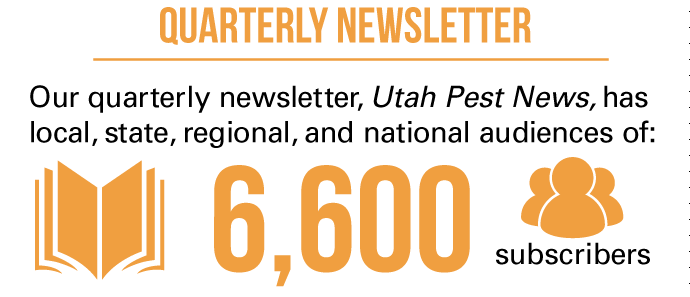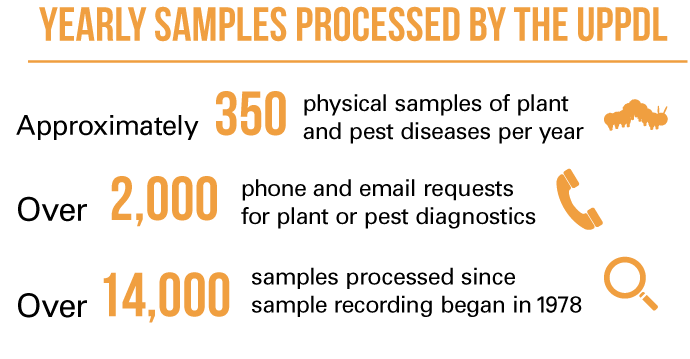Quick Guide
- School IPM Impacts
- IPM Pest Advisories
- New Diseases in Utah Vegetables
- Utah Cooperative Agricultural Pest Survey
- Utah TRAPs
- Pest Management Research
- Utah Plant Pest Diagnostic Lab (UPPDL)
Utah State University’s Extension Plant Pest Programs are diverse in their coverage and are available to serve the needs of Utah citizens. Our team works with commercial producers, professional landscape and land managers, school district staff who care for buildings and landscapes, home gardeners, and others who care for plant systems. We call ourselves Utah Pests, and we are willing to take on any pest problem, large or small. Utah Pests is a group of Extension entomologists and plant pathologists who help solve the thousands of plant and pest issues that concern Utahns daily. The Utah Plant Pest Diagnostic Lab identifies pests and plant problems, the Integrated Pest Management (IPM) Program educates, and the Cooperative Agricultural Pest Survey Program surveys for new and invasive pests. If you aren’t familiar with our resources and services, check out www.utahpests.usu.edu for our quarterly newsletter, IPM advisories (pest activity and management recommendations), fact sheets and other publications, slideshows, video fact sheets, photo galleries, research reports, and access to current weather data to assist with plant and pest management decisions.
- Diane Alston, USU Extension entomologist
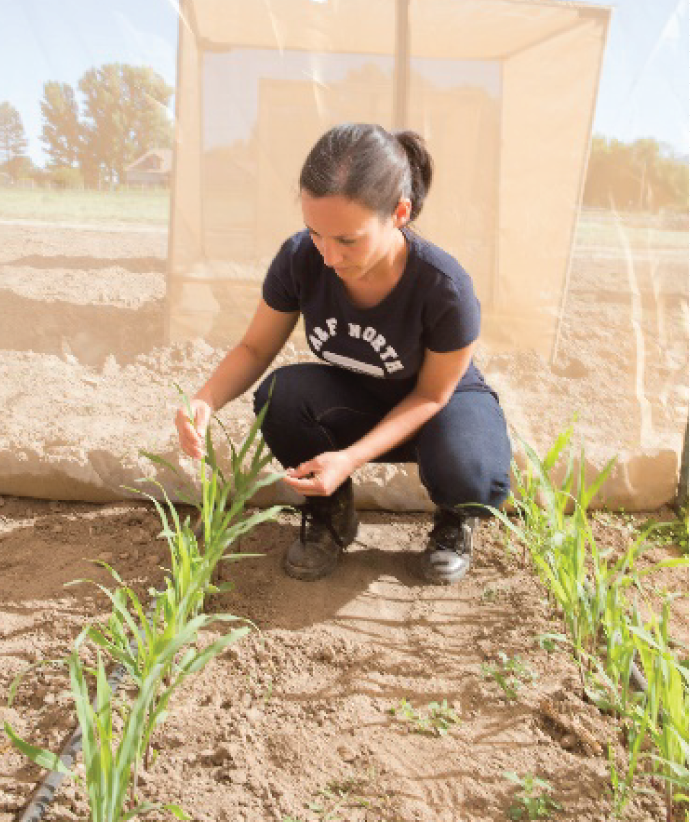
School IPM Impacts
School Integrated Pest Management (IPM) is a major Utah Pests program. The Utah Plant Pest Diagnostic Lab (UPPDL) serves on the Utah School IPM Coalition, which provides IPM training to public health employees and public, private, and charter school faculty and staff. As part of a $250,000 EPA grant, a collaboration among the UPPDL, Colorado State University, and the Salt Lake City School District helped spread IPM adoption throughout Utah. The UPPDL continues to provide IPM education and program development and implementation to Utah's schools.

IPM Pest Advisories
The USU Integrated Pest Management (IPM) crop and landscape newsletters provide advanced pest activity warnings and the safest management practices for treatment. The advisories raise awareness and adoption of IPM practices and showcase the importance of conserving natural resources through pesticide reduction. Every other year, subscribers are surveyed on pest management activities, and many positive changes have been reported.

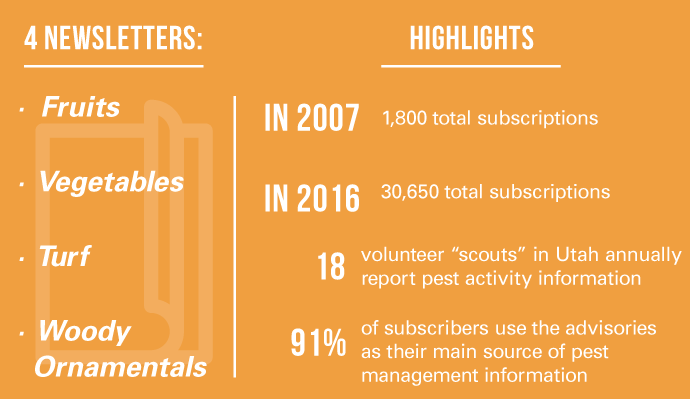
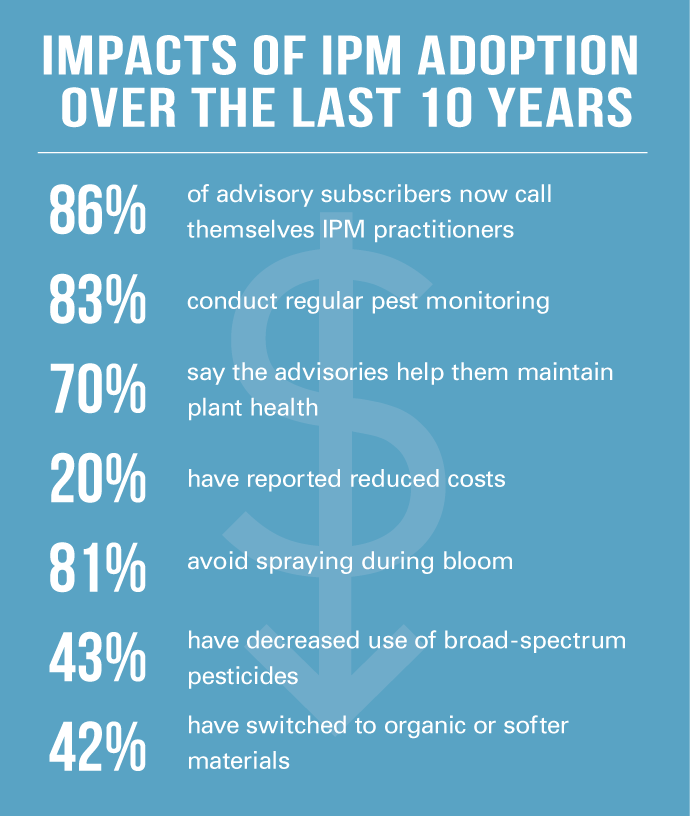
New Diseases in Utah Vegetables
Every year, two to three plant diseases are found that have not been previously reported in Utah. In addition, diseases that are known in the state move onto new hosts. Among the newly identified diseases are: Candidatus Liberibacter solanacearum, which infects potatoes, peppers, and tomatoes; potato virus Y strain NTN on potatoes; and watermelon mosaic virus on cucurbits, including pumpkins, squashes, and gourds. Bacterial spot on tomatoes and peppers introduced through contaminated seed resulted in yield losses of $4,000 to $6,000 per acre. Early detection of new diseases allows growers to control the diseases before they spread further.


Utah Cooperative Agricultural Pest Survey
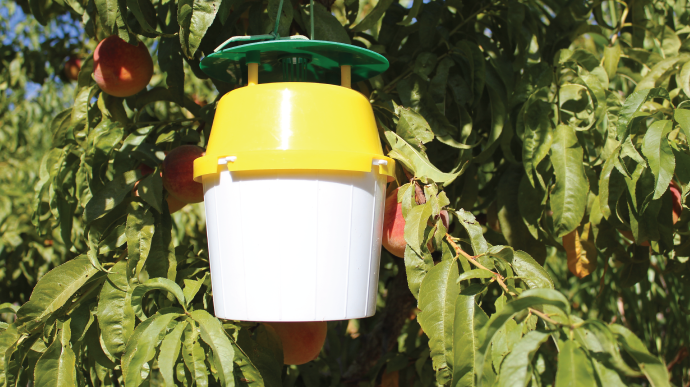 The Utah Cooperative Agricultural Pest Survey (CAPS) is part of a national pest detection program funded through agreements between USU, the Utah Department of Agriculture and Food, and the U.S. Department of Agriculture, Animal and Plant Health Inspection Service. The collaborative effort surveys for exotic pests identified as threats to U.S. agriculture and forest resources. For example, the brown marmorated stink bug is an invasive pest of fruits and vegetables first detected in the U.S. in 1996 and now threatens Utah agriculture since its detection in the state in 2012. Since 2015, the bug has been found in five counties along the Wasatch Front and has the potential to negatively impact approximately $33 million in harvested crops via increased yield loss and management costs.
The Utah Cooperative Agricultural Pest Survey (CAPS) is part of a national pest detection program funded through agreements between USU, the Utah Department of Agriculture and Food, and the U.S. Department of Agriculture, Animal and Plant Health Inspection Service. The collaborative effort surveys for exotic pests identified as threats to U.S. agriculture and forest resources. For example, the brown marmorated stink bug is an invasive pest of fruits and vegetables first detected in the U.S. in 1996 and now threatens Utah agriculture since its detection in the state in 2012. Since 2015, the bug has been found in five counties along the Wasatch Front and has the potential to negatively impact approximately $33 million in harvested crops via increased yield loss and management costs.
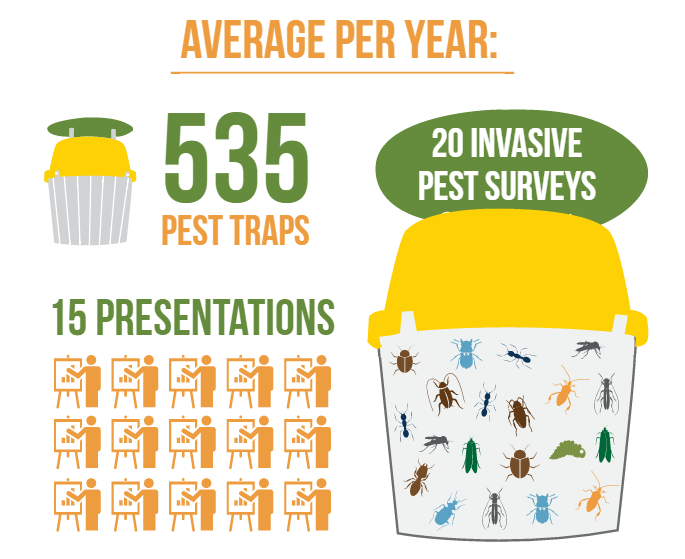
The CAPS program is the first line of defense in protecting Utah agriculture, valued at over $1.6 billion annually and covering nearly 12 million acres, and forests covering over 18 million acres. This is accomplished through invasive species prevention, early detection, rapid response, control, research, and education. Each year, outreach efforts reach an average of 1,000 growers and the public through presentations and workshops and 11,500 subscribers through the Utah Pests advisories and quarterly newsletter.
Utah TRAPs

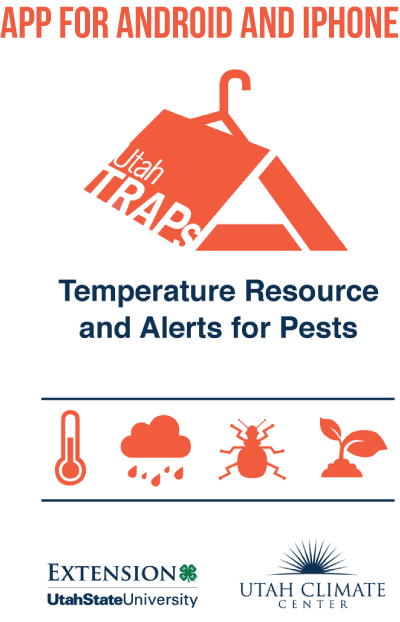
The USU Integrated Pest Management program partnered with the Utah Climate Center to develop web-based tools to help farmers in Utah get timely access to site-specific crop management information. Named Utah TRAPs (Temperature Resource and Alerts for Pests), this collaboration produces real-time pest management information and weather conditions through a website, mobile app, and customizable alerts for over 70 locations in Utah and Idaho. These tools have helped a majority (93%) of the largest fruit growers in the state save thousands of dollars per acre in operating costs by optimizing pesticide applications, irrigation monitoring, and reduction in wind machine use for frost protection.
Pest Management Research
Alfalfa is the largest cash crop in Utah, followed by small grains and corn. Several arthropod pests cause economic damage to these crops including alfalfa weevil, aphids, and spider mites.
Our research efforts focus on:
- The effects of insecticides on pests and predators in alfalfa and evaluation of pest-resistant plant varieties.
- Management of agricultural crops in the West, which can be challenging since water resources are limited and frequency of drought is increasing. Because of this, our research investigates the effect of drought on spider mite outbreaks in small grains and corn.
- The Extension Agronomy Program conducted surveys of Utah’s small grain, corn, and hay producers. Utah farmers using these pest management and plant maintenance recommendations reported a 7.4% increase in crop yields.
- Utah citizens are reached through presentations on integrated pest management in seven county crop schools reaching >400 farmers each year; hands-on pest diagnostic workshops at the Utah Hay Conference with >250 attendees; and >700 pocket guides distributed and >450 video fact sheet views on beneficial and pest insects of alfalfa.
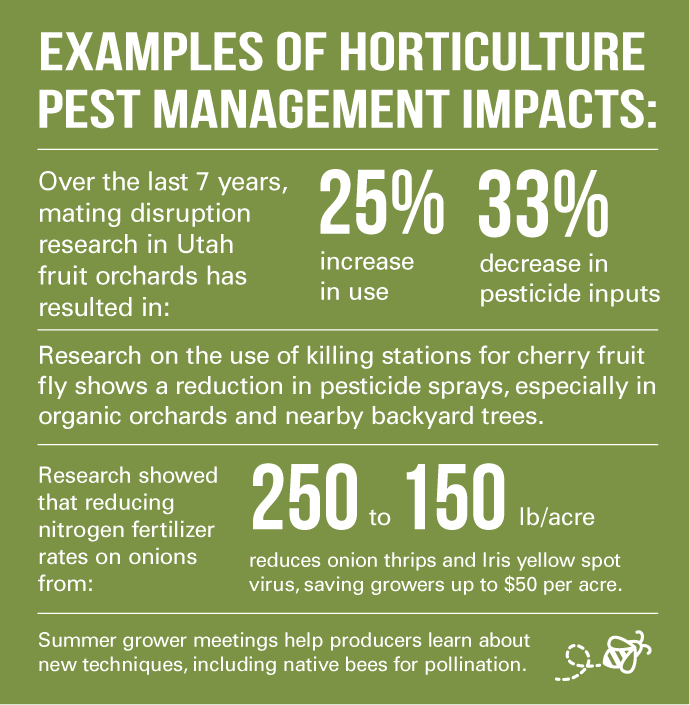


 Utah 4-H & Youth
Utah 4-H & Youth